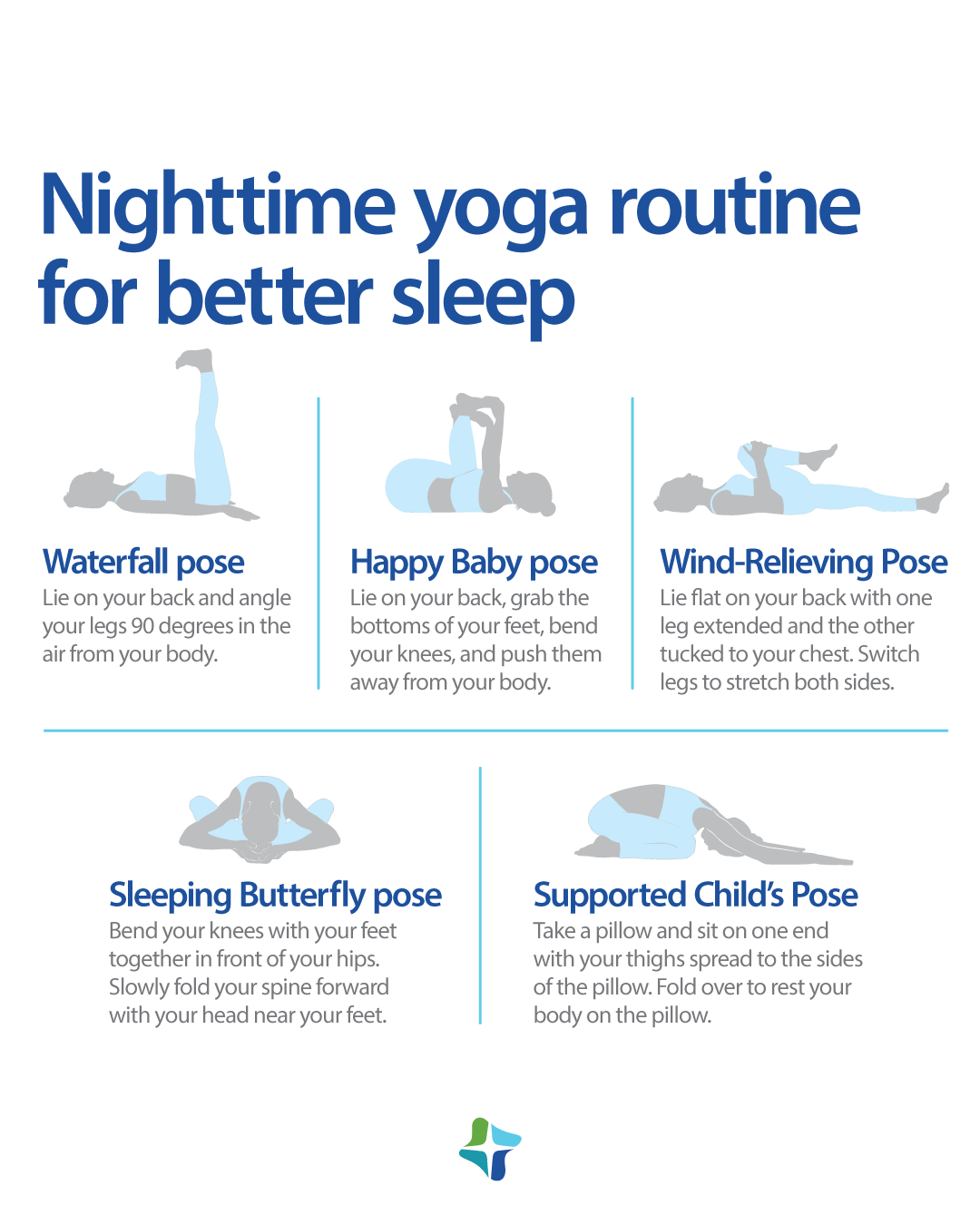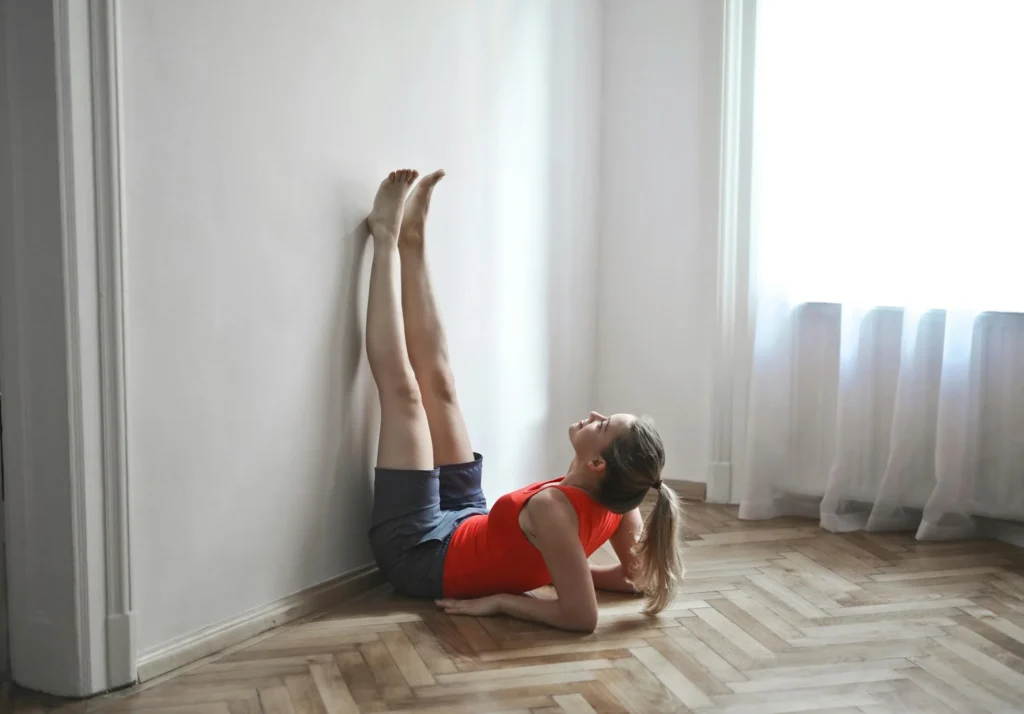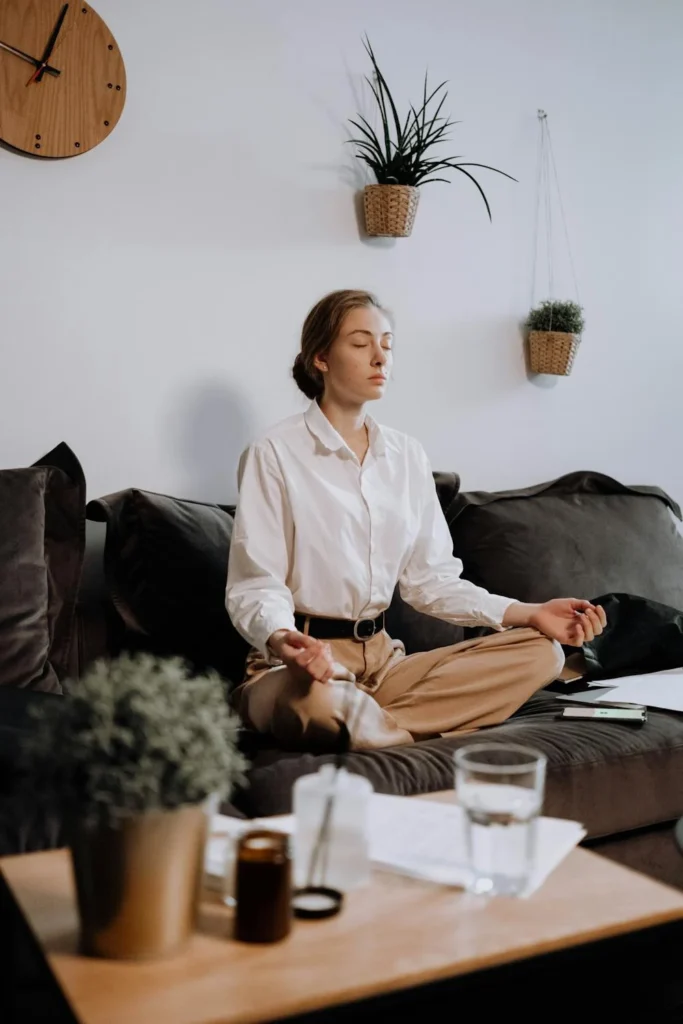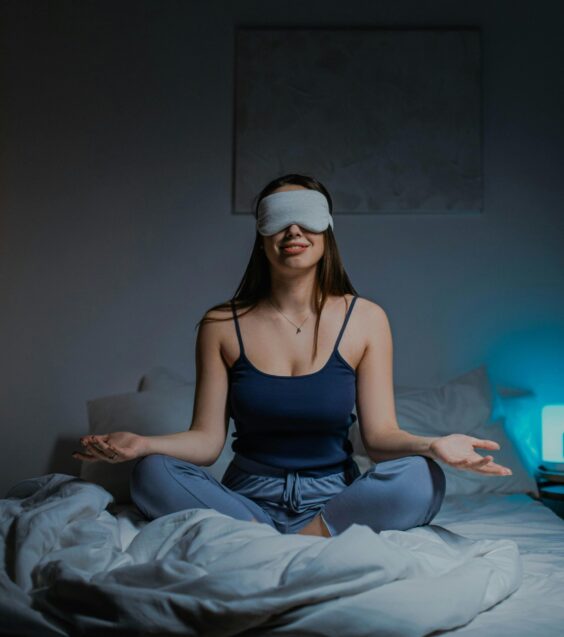!0 Yoga for Better Sleep At Night
Yoga can significantly improve sleep quality by reducing stress and promoting relaxation. Practicing yoga before bedtime helps calm the mind and body.
Many people struggle with falling and staying asleep. Various factors, such as stress and anxiety, can disrupt sleep patterns. Yoga offers a natural solution to enhance sleep quality. Through gentle stretches and mindful breathing, yoga soothes the nervous system. It encourages physical relaxation and mental tranquility.
Integrating yoga into your nightly routine can create a peaceful transition to sleep. This ancient practice not only improves flexibility and strength but also boosts overall well-being. Whether you are a beginner or experienced, specific yoga poses can help you achieve restful sleep. Consistent practice can lead to deeper, more restorative rest.

Credit: www.health.harvard.edu
Benefits Of Yoga For Sleep
Struggling with sleepless nights? Yoga might be the answer. Practicing yoga can significantly improve your sleep quality. From reducing stress to enhancing relaxation, yoga offers numerous benefits for better sleep. Let’s dive into the key benefits of yoga for sleep.
Physical Relaxation
Yoga helps achieve physical relaxation, which is crucial for a good night’s sleep. Stretching and gentle movements ease muscle tension and release built-up stress. Here’s how yoga aids physical relaxation:
- Reduces muscle tension: Yoga poses help stretch and relax muscles, reducing tension.
- Improves blood circulation: Better blood flow helps nourish muscles and organs, promoting relaxation.
- Lowers heart rate: Yoga breathing exercises can lower your heart rate, signaling the body to relax.
- Enhances flexibility: Flexibility from yoga reduces physical discomfort, aiding better sleep.
Consider incorporating these yoga poses for better sleep:
| Yoga Pose | Benefit |
|---|---|
| Child’s Pose | Relieves tension in the back and shoulders. |
| Legs-Up-The-Wall | Improves blood circulation and calms the nervous system. |
| Reclining Bound Angle | Opens the hips and reduces stress. |
Mental Clarity
Yoga not only relaxes the body but also promotes mental clarity. A clear mind is essential for falling asleep quickly and staying asleep. Here’s how yoga enhances mental clarity:
- Reduces stress: Yoga helps release stress, making it easier to relax and sleep.
- Calms the mind: Breathing exercises and meditation quiet the mind, reducing racing thoughts.
- Improves focus: Practicing mindfulness in yoga improves focus, clearing mental clutter.
- Boosts mood: Yoga increases the production of serotonin, the feel-good hormone, enhancing mood and sleep quality.
Try these yoga techniques for mental clarity:
| Yoga Technique | Benefit |
|---|---|
| Pranayama Breathing | Calms the nervous system and reduces anxiety. |
| Meditation | Clears the mind and promotes relaxation. |
| Guided Imagery | Helps create a peaceful mental state, aiding sleep. |

Credit: www.stlukeshealth.org
Key Yoga Poses
Struggling with sleep? Yoga can be a natural remedy to improve your slumber. Certain yoga poses help relax the body and mind, making it easier to fall asleep and stay asleep. Here, we discuss some key yoga poses that can be incorporated into your nightly routine to enhance your sleep quality.
Child’s Pose
The Child’s Pose, also known as Balasana, is a simple yet effective yoga posture. It helps to calm the mind and relieve tension in the body. This pose stretches the hips, thighs, and ankles while promoting relaxation. Here’s how to do it:

- Kneel on the floor with your big toes touching and knees spread apart.
- Sit back on your heels and extend your arms forward, resting your forehead on the floor.
- Stay in this position for a few minutes, breathing deeply and slowly.
Benefits of Child’s Pose:
- Reduces stress and anxiety.
- Stretches the lower back, promoting spinal flexibility.
- Improves blood circulation to the head.
Legs-up-the-wall
The Legs-Up-The-Wall pose, or Viparita Karani, is another excellent yoga posture for better sleep. It helps in reducing fatigue and swelling in the legs while encouraging relaxation. Follow these steps to practice this pose: 
- Lie down on your back with your buttocks close to a wall.
- Extend your legs up the wall, forming a 90-degree angle.
- Rest your arms by your sides, palms facing up.
- Close your eyes and breathe slowly for 5-10 minutes.
Benefits of Legs-Up-The-Wall:
- Relieves tired legs and feet.
- Reduces anxiety and stress.
- Promotes blood circulation to the upper body.
Both these poses are easy to perform and highly effective. Incorporate them into your bedtime routine for a more restful and rejuvenating sleep.

Breathing Techniques
Are you struggling to get a good night’s sleep? Yoga can be a game-changer for your bedtime routine. One of the most powerful tools within yoga is its breathing techniques. These methods can help calm your mind and prepare your body for sleep. Let’s dive into two effective techniques: Diaphragmatic Breathing and the 4-7-8 Method.

Diaphragmatic Breathing
Diaphragmatic breathing, also known as belly breathing, is a simple yet powerful technique. This method involves breathing deeply into the diaphragm rather than shallowly into the chest. It can help reduce stress and anxiety, making it easier to fall asleep. Here’s how to do it:
- Lie down on your back and place one hand on your chest and the other on your belly.
- Take a deep breath through your nose, allowing your belly to rise while your chest stays still.
- Exhale slowly through your mouth, letting your belly fall.
- Repeat this process for 5-10 minutes.
Diaphragmatic breathing can also help improve lung function and oxygen flow. It activates the parasympathetic nervous system, which promotes relaxation. Try practicing this technique daily for better sleep.
4-7-8 Method
The 4-7-8 method is another excellent breathing technique for better sleep. Developed by Dr. Andrew Weil, this method is based on an ancient yogic practice called pranayama. It helps manage stress and induces a state of calm. Here’s how to practice the 4-7-8 method:
- Sit or lie down comfortably.
- Close your eyes and inhale quietly through your nose for a count of 4.
- Hold your breath for a count of 7.
- Exhale completely through your mouth for a count of 8.
- Repeat this cycle 4 times.
This method works by slowing your heart rate and calming your nervous system. It’s a quick way to relax and prepare for sleep. Practice the 4-7-8 method regularly to experience its full benefits.
Also Read: Nurture Your Body and Baby: Top Yoga Postures for Pregnant Women
Creating A Sleep Routine
Are you tired of tossing and turning at night? Creating a sleep routine can help. Yoga for better sleep can be the solution you need. Establishing a consistent routine can significantly improve your sleep quality. Let’s dive into some evening practices and the importance of consistency.
Evening Practices
Evening practices play a crucial role in preparing your body and mind for sleep. These practices can help you unwind and relax.
Start with gentle yoga poses that focus on stretching and relaxation. Some effective poses include:
- Child’s Pose
- Legs Up the Wall
- Seated Forward Bend
- Reclining Bound Angle Pose
Breathing exercises also help calm your mind. Try practicing deep breathing or alternate nostril breathing. Both techniques can reduce stress and anxiety.
Incorporate meditation into your evening routine. Even five minutes of mindfulness can make a big difference. Focus on your breath and let go of any negative thoughts.
Here’s a simple evening routine to follow:
| Time | Activity |
|---|---|
| 8:00 PM | Gentle Yoga Poses |
| 8:20 PM | Breathing Exercises |
| 8:30 PM | Meditation |
| 8:40 PM | Reading a Book |
| 9:00 PM | Lights Out |
Consistency Matters
Consistency is key to achieving better sleep. Your body loves routine, and sticking to a schedule can improve your sleep quality.
Go to bed and wake up at the same time every day. This helps regulate your body’s internal clock. Even on weekends, try to maintain your schedule.
Keep your evening routine consistent. Follow the same steps each night. This signals to your body that it’s time to wind down.
Limit screen time before bed. The blue light from screens can interfere with your sleep. Aim to turn off all devices at least an hour before bedtime.
Here are some tips to maintain consistency:
- Set a bedtime alarm to remind you to start your routine.
- Keep your bedroom cool and dark.
- Avoid caffeine and heavy meals in the evening.
- Practice relaxation techniques like yoga and meditation regularly.
By following these tips, you can create a consistent sleep routine. This will help you fall asleep faster and enjoy a more restful night.
Yoga Nidra Explained
Struggling with sleep? Yoga might be your solution. Yoga Nidra, also known as yogic sleep, is a powerful meditation technique. It guides you into a state of deep relaxation while maintaining full consciousness. This practice is like a sleep therapy that can help you unwind and prepare for restful sleep.
Guided Relaxation
Yoga Nidra involves guided relaxation that leads you into a meditative state. A teacher or audio guide instructs you through a series of steps. These steps help you relax each part of your body and mind.
Here’s how a typical session goes:
- Settle into a Comfortable Position: Lie down on your back, with your arms by your sides.
- Focus on Your Breath: Pay attention to your breathing, noticing the rise and fall of your chest.
- Body Scan: The guide will ask you to focus on different parts of your body, starting from your toes to your head, relaxing each part.
- Visualization: You might be asked to imagine calming scenes, like a beach or a forest.
- Affirmations: Positive statements to reinforce a calm and relaxed state.
This step-by-step process helps to calm your nervous system. It reduces stress and prepares your body for sleep. Even beginners can find it easy to follow.
Benefits For Sleep
Practicing Yoga Nidra regularly can bring numerous benefits for better sleep:
- Reduces Stress: The deep relaxation process lowers cortisol levels, the stress hormone.
- Improves Sleep Quality: By calming the mind, you can fall asleep faster and enjoy deeper sleep stages.
- Balances Hormones: It helps in balancing hormones responsible for sleep, like melatonin.
- Relieves Insomnia: Many people find relief from insomnia through consistent practice.
- Enhances Mental Clarity: A well-rested mind is more focused and clear.
Yoga Nidra is a simple yet effective tool for anyone struggling with sleep issues. The benefits extend beyond sleep, improving overall well-being. Integrate it into your nightly routine for a peaceful and restful night.

Credit: ar.pinterest.com
Meditation Practices
Good sleep is essential for a healthy life. One way to improve sleep quality is through yoga. Meditation practices in yoga can help calm the mind and relax the body. These practices prepare you for a restful night. Below, explore two effective meditation techniques: Mindfulness Techniques and Body Scan Meditation. 
Mindfulness Techniques
Mindfulness techniques help focus your mind on the present moment. This practice reduces stress and promotes relaxation.
Here are some simple steps to practice mindfulness:
- Find a quiet space: Choose a place with minimal distractions.
- Get comfortable: Sit or lie down in a comfortable position.
- Focus on your breath: Pay attention to your breathing. Notice the air entering and leaving your nostrils.
- Observe your thoughts: Let your thoughts come and go without judgment.
Mindfulness can also involve focusing on different parts of your body. This helps release tension and promotes calmness.
A simple mindfulness exercise:
- Close your eyes and take a deep breath.
- Focus on the top of your head.
- Slowly move your attention down to your toes.
- Notice any tension and let it go.
Practicing mindfulness before bed can prepare your mind for sleep. It creates a peaceful state that helps you fall asleep faster.
Body Scan Meditation
Body scan meditation is another effective way to improve sleep. This technique involves scanning your body for tension and releasing it.
Follow these steps for a body scan meditation:
- Lie down comfortably: Choose a comfortable position on your bed.
- Close your eyes: This helps you focus inward.
- Take deep breaths: Inhale deeply and exhale slowly.
- Start at your toes: Pay attention to your toes. Notice any sensations or tension.
- Move upwards: Slowly move your focus from your toes to your head.
- Release tension: Relax each part of your body as you move your focus.
Body scan meditation helps identify areas of tension in your body. By focusing on these areas, you can release stress and promote relaxation.
A few benefits of body scan meditation:
| Benefit | Description |
|---|---|
| Reduces Stress | Helps calm the mind and body. |
| Improves Sleep | Prepares your body for a restful night. |
| Enhances Relaxation | Promotes overall well-being and peace. |
Practicing body scan meditation regularly can significantly improve your sleep quality. It helps create a relaxed state perfect for a good night’s sleep.
Lifestyle Tips For Better Sleep
Many people find it hard to sleep well at night. Yoga can help improve your sleep. But there are also lifestyle tips that can make a big difference. Here are some tips to help you sleep better.
Nutrition Considerations
What you eat affects your sleep quality. Good nutrition can help you sleep better. Here are some tips:
- Avoid Caffeine: Drinks like coffee and soda have caffeine. Avoid them in the evening.
- Limit Sugar: Too much sugar can keep you awake. Eat less candy and sweets.
- Eat Light Dinners: Heavy meals make it hard to sleep. Choose lighter options like salads or soups.
- Stay Hydrated: Drink enough water during the day. But avoid drinking too much before bed.
A balanced diet is key. Here’s a simple table for better choices:
| Good Choices | To Avoid |
|---|---|
| Fruits and Vegetables | Spicy Foods |
| Whole Grains | Heavy Meats |
| Lean Proteins | Fried Foods |
Reducing Screen Time
Too much screen time can hurt your sleep. The blue light from screens makes it hard to fall asleep. Here’s how to cut down:
- Set a Screen Curfew: Turn off screens an hour before bed.
- Use Blue Light Filters: Many devices have settings to reduce blue light.
- Read a Book: Choose a paper book instead of reading on a screen.
- Create a Relaxing Routine: Do calming activities like reading or listening to soft music.
Reducing screen time helps your mind relax. Try these tips to improve your sleep. Less screen time means better rest.
Common Mistakes
Yoga can be a powerful tool for achieving better sleep. Many people make common mistakes that hinder their progress. Identifying and correcting these mistakes can enhance the effectiveness of your yoga practice, ensuring a restful night’s sleep.
Overdoing It
Many people believe that more yoga is always better. This is a common mistake. Overdoing yoga can lead to fatigue and stress, which are counterproductive for sleep. Yoga should be a relaxing practice, not a strenuous workout.
Signs of overdoing yoga include:
- Muscle soreness
- Feeling drained
- Difficulty sleeping
To avoid overdoing it, follow these tips:
| Tip | Explanation |
|---|---|
| Limit sessions to 30 minutes | A shorter, focused session can be more effective. |
| Choose gentle poses | Opt for poses like Child’s Pose or Legs-Up-The-Wall. |
| Practice mindfulness | Focus on your breath and body sensations. |
By keeping your yoga practice simple and gentle, you’ll find it easier to relax and prepare for sleep.
Ignoring Body Signals
Another common mistake is ignoring your body’s signals. Your body communicates through discomfort and pain. Ignoring these signals can lead to injuries and disrupt sleep.
Important body signals to watch for:
- Pain in joints or muscles
- Difficulty breathing
- Dizziness or nausea
To better listen to your body:
- Start with a warm-up
- Modify poses to suit your comfort level
- Take breaks when needed
Never push through pain. If a pose feels uncomfortable, adjust or skip it. Yoga should feel good and help you relax. Listening to your body ensures a safe and effective practice that promotes better sleep.
Frequently Asked Questions
How Does Yoga Help With Sleep?
Yoga promotes relaxation by reducing stress and calming the mind. It enhances the body’s natural sleep mechanisms, making it easier to fall asleep and stay asleep.
What Yoga Poses Improve Sleep Quality?
Poses like Child’s Pose, Legs Up the Wall, and Corpse Pose help relax the body. These poses reduce tension and prepare you for a restful night.
Can Yoga Reduce Insomnia Symptoms?
Yes, regular yoga practice can alleviate insomnia symptoms. It relaxes the nervous system, lowers stress, and promotes better sleep patterns.
When Should I Practice Yoga For Better Sleep?
Practice yoga 1-2 hours before bedtime. This timing allows your body to relax and prepare for sleep.
Conclusion
A consistent yoga practice can significantly improve your sleep quality. Embrace relaxation techniques and gentle stretches before bedtime. Prioritize mindful breathing to calm your mind and body. Enjoy the restful nights and refreshed mornings that yoga can bring. Start your journey to better sleep with yoga today.



